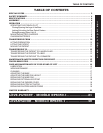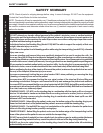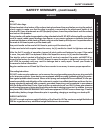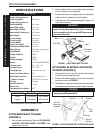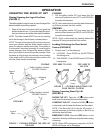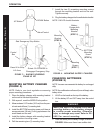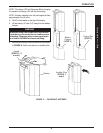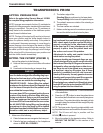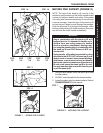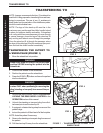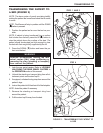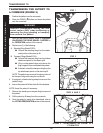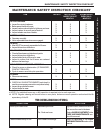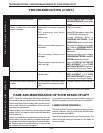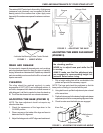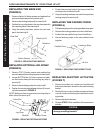
11
FIGURE 2 - MOVING THE PATIENT
MOVING THE PATIENT (FIGURE 2)
NOTE: The legs of the stand-up lift must be in the
maximum open position and the shifter handle locked
in place for optimum stability and safety. If the patient
is in a sling and it becomes necessary to move though
a narrow passage, close the legs of the stand-up lift
only as long as it takes to move through the passage.
Once the stand-up lift is through the passage, return
the legs of the stand-up lift to the maximum open posi-
tion and lock the shifter handle immediately.
WARNING
STANDING SLINGS - DO NOT use the standing
sling in combination with the stand up lift as a
transport device. It is intended to transfer an in-
dividual from one resting surface to another
(such as a bed to a wheelchair). Moving a per-
son using the standing sling in combination with
the stand up lift over ANY distance is NOT rec-
ommended.
During transfer, with patient suspended in a sling
attached to the lift, DO NOT roll stand up lift over
objects such as carpet, raised carpet bindings,
door frames, or any uneven surfaces or obstacles
that would create an imbalance of the stand up
lift and could cause the stand up lift to tip over.
Use push handle on the mast at ALL times to push
or pull the stand up lift.
1. Using the push handle, move the stand up lift away
from the surface.
2. SLOWLY, move the patient to the desired surface.
3. Lower the patient onto the desired surface. Refer to
TRANSFERRING TO in this manual.
STEP 1
FIGURE 1 - LIFTING THE PATIENT
STEP 1A
STEP 1B
STEP 3
STEP 4
STEP
2A
STEP
2B
STEP
2C
STEP
2D
STEP
2E
TRANSFERRING FROM
T
R
A
N
S
F
E
R
R
I
N
G
F
R
O
M



